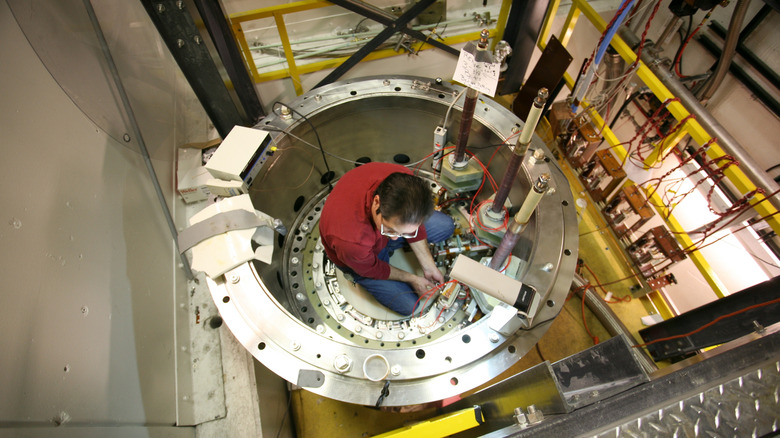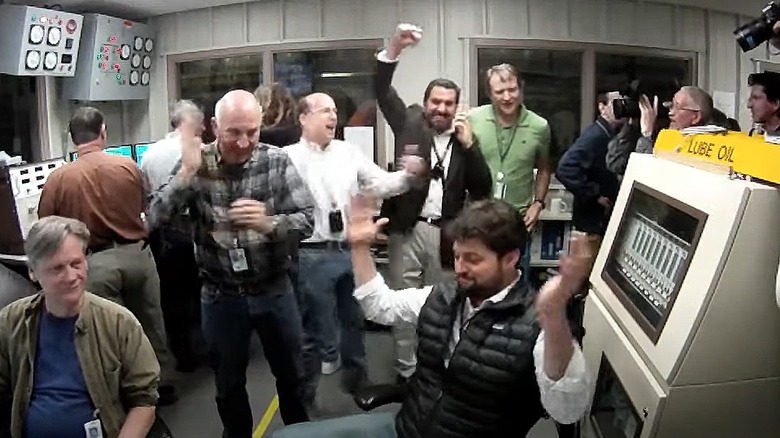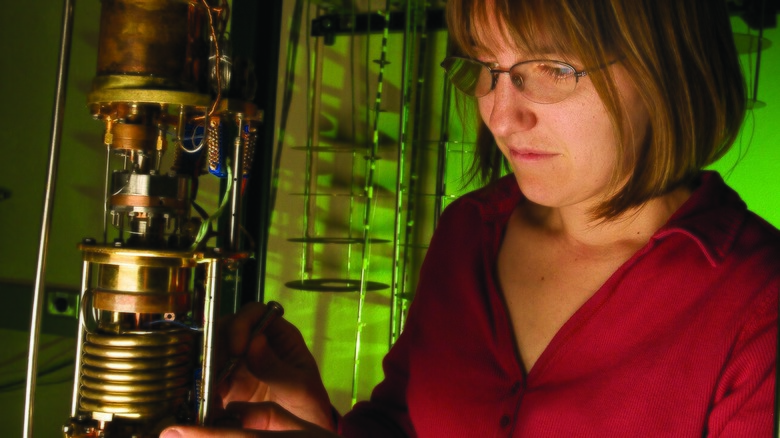
The quest for the world's strongest magnet faced a surprisingly violent problem: they kept exploding. At least, that was the issue facing a group of scientists at the National High Magnetic Field Laboratory's (MagLab) pulsed field facility at Los Alamos National Laboratory in 2012 when they built the world's first 100-tesla pulse magnet. Named after the famed inventor Nikola Tesla for his 1882 discovery of the rotating magnetic field, teslas measure the strength of extremely powerful magnetic fields.
For reference, the Earth's magnetic field is only 50 microteslas, roughly 2 million times smaller than MagLab's pulsed magnet.
Although scientists have produced magnetic fields north of 1,000 teslas, the utility of these magnets is limited, as they explode almost instantaneously. For instance, the length of the magnetic pulse in said 'explosive' magnets lasts only 0.0075 milliseconds, making it difficult to attain usable scientific measurements. Laser-produced magnetic fields, which have registered up to 2,800 teslas, suffer from a similar measurement problem.
This is what makes MagLab's accomplishment such an important breakthrough for scientists who study superconductivity. By creating a non-explosive pulse magnet, MagLab can produce measurable results for those tracking how different substances behave in high magnetic environments. Such studies possess immense potential for changing scientists' understanding of the quantum-level behaviors of our physical world, a key factor in energy, medicine, fundamental physics, and material science studies.
Take, for instance, the work of the 30-country consortium ITER, which built a sixty-foot magnet used to study fusion energy. Another example is MRI machines, engineering marvels that continue to shape our understanding of the human body. At Los Alamos, MagLab's 35-ton magnet is busy forging scientific discoveries of its own, ranging from quantum technologies to pathology.
Read more: 10 Must-Have Smart Home Devices For Your Outdoor Spaces
MagLab's Mega-Magnet

MagLab's super magnet is a feat to behold. Made up of four electrical circuits, the magnet is divided into an outer coiled magnet with a smaller inner set placed within. Despite their small bore sizes, the bores within the insert and outsert are roughly 0.59 and 8.9 inches, respectively, and the magnetic coils weigh roughly 9 tons. To produce a magnetic field, MagLab surges an incredible amount of energy through these circuits. The outer coil uses a 1.4-gigawatt generator — approximately 200 megawatts more than Doc Brown needed for his DeLorean and the rough energy equivalent of 140 million LED lightbulbs.
The more powerful inner circuit, meanwhile, utilizes a 2 megajoule capacitor, something akin to a battery that discharges energy incredibly quickly. To reduce overheating and resistive losses, the coils are held within a dewar field with liquid nitrogen. Think of it as a giant stainless steel thermos which keeps the magnet at a cool -324.67 degrees Fahrenheit. Even with this cooling system, the immense energy contained in every pulse means that the magnet takes about an hour to cool back down.
The Pulse Field Facility is categorized as a pulse magnet due to the brevity of its field duration. While each pulse lasts three seconds, the magnet skyrockets from 40 to 100 teslas in 8 milliseconds — a magnetic field it can only sustain for 15 milliseconds. For the uninitiated, this may seem like a mere trifle, but 15 milliseconds is roughly two thousand times longer than previous explosive magnets, giving MagLab's group of scientists enough time to record usable measurements. Another major advantage is the facility's status as a multi-shot magnet, which allows scientists to conduct multiple experiments and find repeatable results.
The Research At MagLab

Magnets have powered countless scientific feats, ranging from magnetic levitation bullet trains to MRI machines. At Los Alamos, condensed matter physicists use MagLab's magnet to explore superconductivity, which involves examining how tiny particles within atoms behave under magnetic fields. As the laboratory puts it, the easiest way to understand this is to visualize its team of scientists as astronomers in reverse: using the Pulsed Field Facility like a telescope to understand the unique properties of otherwise unobservable particles. In this way, scientists use MegaLab's magnets to study phenomena on the grandest and most minute scales imaginable, exploring everything from the behavior of specific particles to the composition of distant moons.
MagLab scientists utilize the facility to test how new materials respond to magnetic forces, an essential step toward developing quantum technologies that make everything from consumer goods to medical devices smaller, faster, stronger, and more effective. In medicine, MagLab researchers use the Pulsed Field Facility to study the behavior and structure of living organisms and diseases, providing insights into complex processes behind health risks such as cancer, neurodegenerative diseases, and stroke. Their work also helps identify the chemical composition of organic and inorganic substances.
Recent discoveries from MagLab include finding water-soluble chemicals in asphalt caused by sunlight, analyzing the chemical composition of Arctic rivers, and developing magnetically induced recycling techniques. Astronomers, meanwhile, have used the technology to determine the chemical composition of meteorites and distant moons. Since its record-breaking test in 2012, the facility has been at the forefront of America's scientific efforts. However, facing a 40% cut in funding in Congress's 2026 budget, MagLab's future hangs precariously in the balance, as does the U.S.'s advantage in magnetic research.
Want the latest in tech and auto trends? Subscribe to our free newsletter for the latest headlines, expert guides, and how-to tips, one email at a time.
Read the original article on SlashGear.











